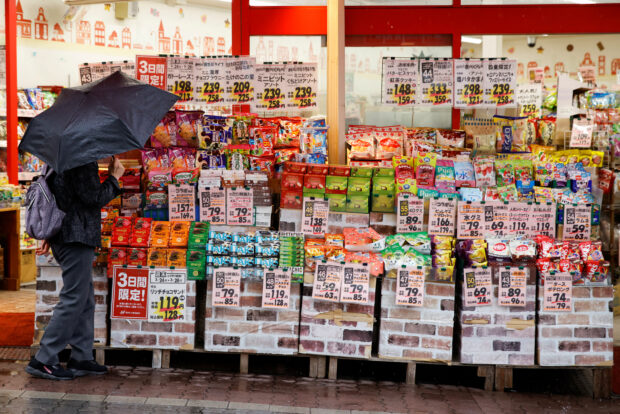Japan’s inflation beats forecasts, end of negative rates still in sight

A woman looks at items at a shop in Tokyo, Japan, March 24, 2023. REUTERS/Androniki Christodoulou
TOKYO – Japan’s core consumer inflation slowed for a third straight month in January but beat forecasts and held at the central bank’s 2 percent target, keeping alive expectations it will end negative interest rates by April.
The 2 percent increase beat median market forecasts for a 1.8-percent rise, the internal affairs and communications ministry data showed on Tuesday, underscoring views waning cost-push inflation from commodity imports could ease the pain of higher living costs.
However, the steady inflation also reaffirms expectations hefty pay hikes will be offered by big firms at labor-management wage talks on March 13, paving the way for an end to negative interest rates as soon as March or April.
READ: BOJ to scrap negative interest rates in April, say over 80% of economists
Japan’s core consumer price index, which includes oil products but excludes fresh food prices, compared with economists’ median estimate for a 1.8-percent annual gain.
Article continues after this advertisementBig drop in energy costs
The slowdown was due in part to a big drop in energy costs, reflecting the base effect of last year’s sharp rise and government subsidies to curb gasoline and utility bills, in a sign of waning cost-push pressure that had kept core inflation at or above the Bank of Japan’s 2 percent target since April 2022.
Article continues after this advertisementREAD: OECD urges Japan’s central bank to gradually raise interest rates
Going forward, the key is whether wage hikes beat inflation enough to give households purchasing power, so companies can continue to pass on costs and keep inflation durably at the BOJ’s 2percent target, analysts say.
The so-called “core core” index that strips away both fresh food and energy prices, closely watched by the BOJ as a narrow gauge of the broader price trend, rose 3.5percent year-on-year in January, following a 3.7-percent rise in December.